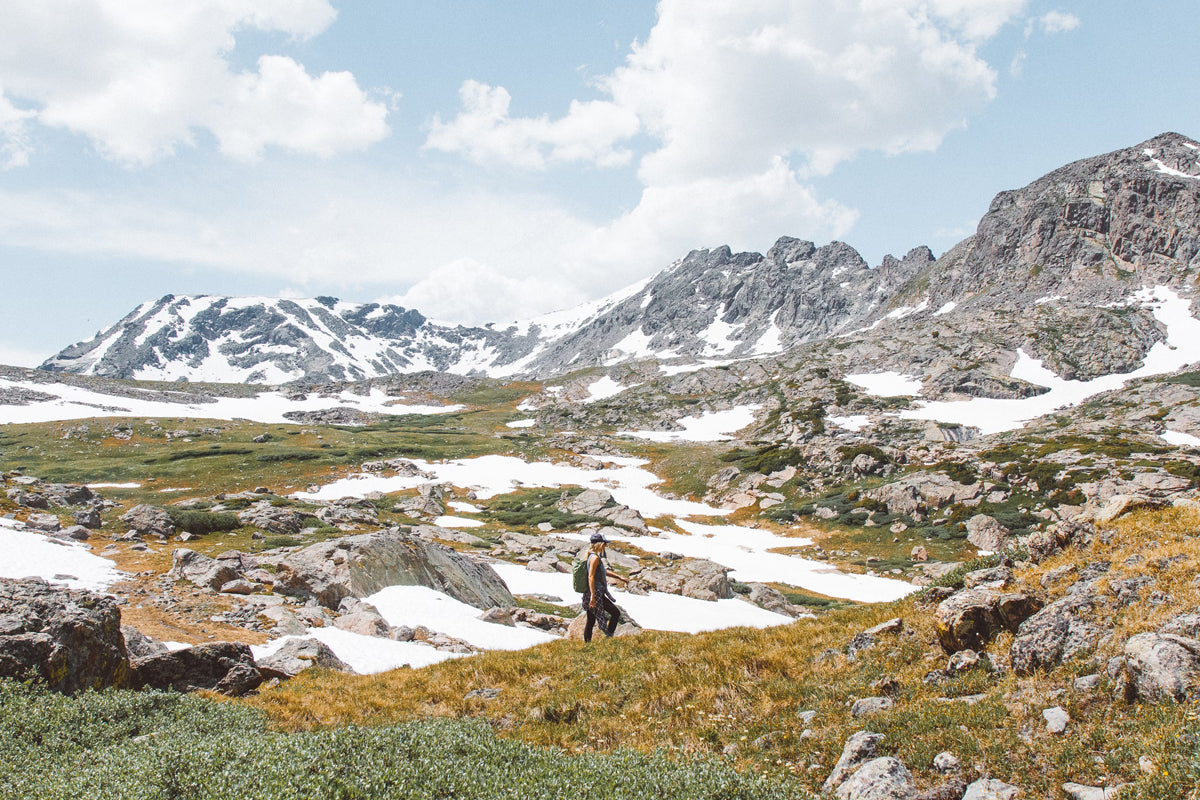Training for high altitude: What we know about thriving up high

Intro
When’s the last time you raced with a plastic bag on your head? Imagine trying to gulp air, realizing you can’t, and so trying harder and harder until you’re in a frenzied panic. Dramatic, sure, but anyone that’s raced at altitude without undergoing the proper altitude acclimation knows of what I speak. Your breathing gets hard and fast (as is typical), but it doesn’t seem to do anything, and so gets harder and faster still. For the uninitiated, panic takes over at this point.
- I can’t breathe -
It’s true, you can’t. You left your oxygen-rich world back at low altitude. Here at high altitude you can’t go as hard, go as long, recover as quickly, and ultimately go as fast. Well, at least not without the proper acclimation strategy. Welcome to your crash course in preparing for an event at altitude.
At Altitude, Breathing Sucks
At sea level, the weight of the air above (known as atmospheric pressure) is pushing down the air below and creates a dense mix of nitrogen and oxygen molecules. It’s here you have the most oxygen available to fuel your working muscles (side note: sea level aerodynamics is another story altogether where the dense air creates additional friction). The higher you go, the less weight the atmospheric pressure exerts, and the more diffuse the oxygen levels become. In terms of breathing, it sucks up there.
What is Considered High Altitude?
It’s generally thought that for the levels detailed below, an acclimation strategy is required to perform at a high level. Truth is, there’s a price to pay for any increase in altitude, but it’s at the levels below a more considered strategy is required.
- Moderate Altitude - 4,900 feet (~Boulder, Colorado) to 8,200 feet (~Aspen, Colorado)
- High Altitude - 8,200 to 11,500 feet (~Leadville, Colorado)
- Very High Altitude - 11,500 to 18,000 feet (~Everest Base Camp)
First: Spend Time at Altitude
The literature suggests elevation above 4,900 feet requires two weeks, or 14 days of acclimation. This is enough time to build the rudiments of your acclimation and is the generally accepted minimum if you want to race well. This, however, is not enough time to fully acclimatize, which is more on the timescale of 3 - 6 weeks (depending on how receptive you are to the new oxygen-lite environment). So, the rule of thumb is 14 days minimum at elevations above 5K.
*Reminder and Brief Aside*
Even after full acclimation, you must abandon the notion that you can produce the same power as at sea level. At its most general, with less oxygen in the air, you’re unable to deliver as much fuel to working muscles, which means you can’t push them as hard, which means they don’t become as strong. Altitude can be considered a governor of sorts, and although there are efficiency upsides, this is considered the downside of living and training at altitude. Some have tried to split the baby and live at altitude and train at sea level (live high, train low) where they can incur the low oxygen adaptations without sacrificing the oxygen-rich training environment, but the benefits seem slim (or even inconclusive) and the impracticality of the living arrangement (for most of us anyway) makes it a non-starter. Enter questions of artificial hypoxic chambers to mimic the low oxygen environments, such as tents and masks. In my humble opinion, save your money. You won’t spend enough time in your altitude tent or mask to create the necessary adaptations, or if you do, the trade-offs of poor sleep quality and slow recovery may nullify gains. I’m admittingly being armchair here, so just be cautious and do your research should you go that route.
Second: Hydration, Nutrition, Sleep, and Common Sense
When you arrive at the high altitude destination, (preferably 14 days in advance of your event) help your body in the adaptation process by exercising some good old fashioned common sense. Now is not the time to take up day-drinking and splurge on chemically bathed foods. Keep your hydration dialed (with plenty of electrolytes) and nutrition balanced (with special emphasis on carbs). Fall into a regular sleep routine and repeat. Your body will have its hands full increasing your red blood cells and capillary density, and generally improving the amount of oxygen your body can deliver. All this is to say, now is not the time to take up or return to terrible habits. You showed up early for a reason; give your body the time and energy to do its work.
Third: Start Slow and Listen To Your Body
If you're not used to it, the first few days of training at high altitude can be strange, even unsettling. Burning lungs, light head, disorientation. The higher you are, the more likely you are to encounter the (mild or severe) effects of altitude sickness or acute mountain sickness when training. If you’re above 8K feet, take the first workouts especially slow, using how you feel as your primary guide. Gradualization, or strategically moving to higher and higher altitudes to ease the shock and smooth the adaptation process is a common technique in altitude acclimatization. If this is an option for you, use it. Either way, start slow, be safe, and listen to your body.
Fourth: Use the FTP Conversion Table
Most of us won’t heed this advice. I know I didn't. It goes something like this - It’ll be the beginning of the race and I’m climbing in the group. My power numbers are too high to be sustained, but I think, nah, I feel good. Maybe I brought my sea level FTP with me this time.
No. I didn’t. This is adrenaline. BOOM.
- Don’t be like me - and you’ll be at a big advantage, especially for national level events where most of the competitors are from lower altitudes. Trust the numbers in the conversion chart below (from Joe Friel, link below), and although you’ll be off the back initially, as your competitors implode (they can’t hold their numbers either), you’ll cut right through them as the race progresses. This is such a reliable phenomenon that altitude racing deserves its own category; It's more like a high-stakes TT. Stray too far away from your ‘altitude’ FTP and the meltdown is guaranteed. Good luck getting back to the car.

Use note: If I’m acclimatized, I’ll use the numbers on the left. If I’ve been at altitude for 14 days or so, I’ll take the average of the ‘acclimatized’ and ‘non-acclimatized’ columns, and if I’m less than 14 days, I’ll take a few percentage points off of ‘non-acclimatized’ and move it around based on comfort. To make this clear, if you have a sea level FTP of 300, you’ve acclimatized (in Leadville) for 6 weeks for the Leadville 100 MTB race, your race day FTP is 234. You’ve read that correctly.
~12,000 Feet = 300 (SL FTP) * .78 = 234 FTP
Conclusion
Although some of the above is geared specially to biking, the general principles apply to all endurance athletes. Your body needs time to adapt to the oxygen-lite conditions, with the amount of time corresponding to the altitude. It’s often forgotten that hydration, nutrition, and sleep are large components of the acclimation process itself. Be the best version of yourself while acclimatizing; give your body the time and energy to rework your oxygen processing systems. Slow down, only moving into intense exercise or interval training after your body has given the green light. When racing, be careful not to drift too far above your ‘altitude’ FTP as the consequences are harsher than sea level. Remember to look up on occasion and consciously breathe the clean mountain air. There may not be much of it, but because you’ve done the work, a little is all you need.
Sources:
- https://www.tutorchase.com/notes/ib/sehs/14-5-7-impact-of-altitude-on-sports-performance
- https://joefrieltraining.com/altitude-and-aerobic-performance/
- https://velo.outsideonline.com/road/road-training/altitude-acclimation-5-tips-for-optimizing-performance/
- https://joefrieltraining.com/altitude-and-aerobic-performance/
Take the next step in your training regimen: Try any BRL Sports supplement risk-free! If our natural nutritional products aren’t the best you’ve ever used, simply return your purchase for a 100% refund — no questions asked!
Also in Health and Wellness Blog





